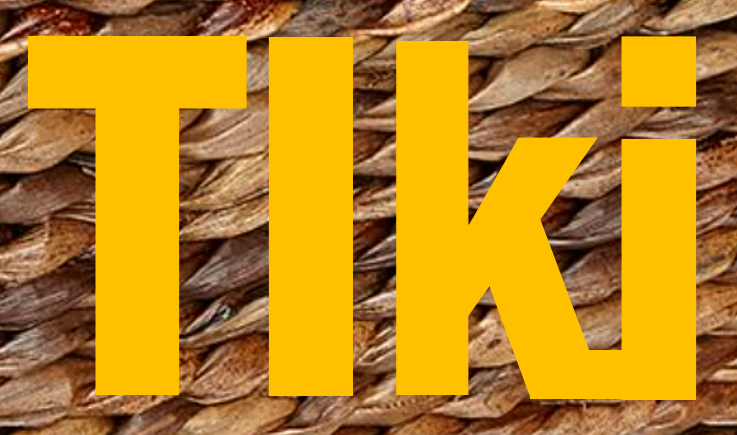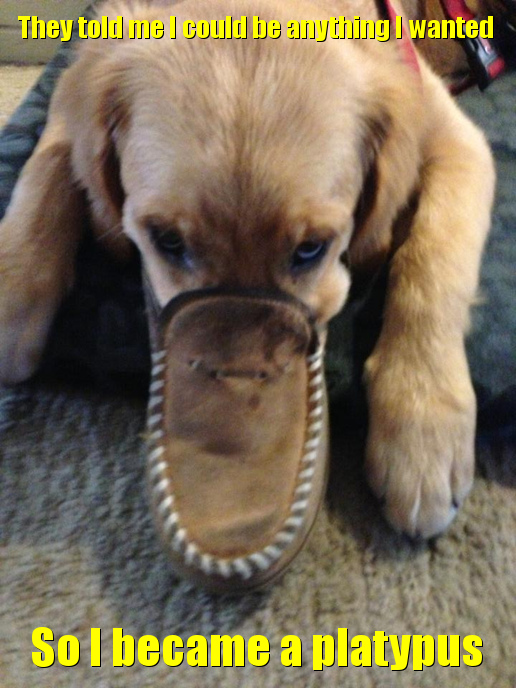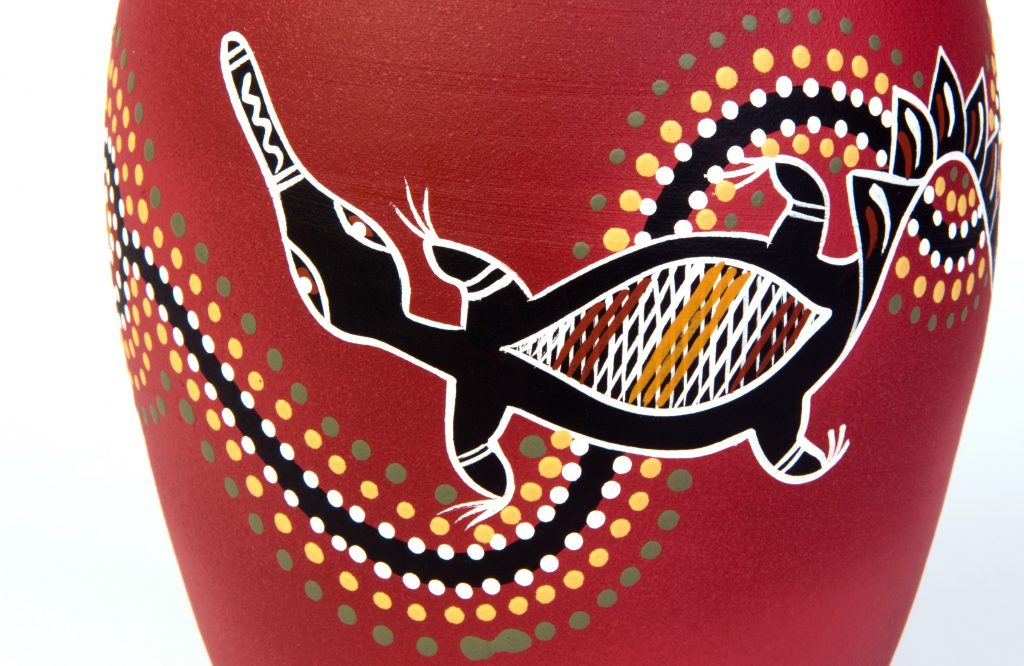
To coincide with our presentation on the Waves of Asset Management at the IAM Global Conference on June 15, Talking Infrastructure launches: TIki. The wiki for strategic Asset Managers.
To being with, while we build up the content, it’s read-only, but we invite you to join in with further development.
Organized by Wave, we aim to build up an unrivalled knowledge base on Strategic Asset Management, including access to the best of… Strategic Asset Management, Penny’s biweekly newsletter from 1999 to 2014, as well as more on Building an Asset Management Team, and through DAN and other networking with AM leads in North America and beyond. And don’t miss an episode of The Story of Asset Management, which for Penny was always about being strategic.
On Wave 3, Infrastructure Decision Making, we are using TIki to capture thinking on future friendly assets – better questions, some of them hard, particularly in this era of ‘Build Back Better’ trillions.
For Wave 4, we aim to start to nibble away at how to integrate infrastructure and planetary health, starting with the initiatives at Blue Mountains City Council.
TIki already has many pages, and many more to come. It’s easy to follow your curiosity, as well as backtrack via the trace.
Click on TIki in the top menu bar, and start your exploration now!
“Have you looked at what the UK and the USA are doing?” Whenever I talked with others about our work in asset management during those early years with the Public Accounts Committee, 1985-1987, this question would commonly be voiced, generally in the tone of ‘Surely others have already done this’. But they hadn’t. One of the hardest tasks was overcoming this Australian cultural cringe. We simply couldn’t conceive of ourselves being in the lead in anything – except Sport. And yet, when it comes to asset management we have led the world. Both the UK and the USA learnt from us! How did this come about?
Nevertheless, New York was very helpful when it came to getting our message across. It became an object lesson for what might befall us if we did not get our heads around Asset Management. How come?
The answers – and many interesting New York stories – can be found in Chapter 6 of our continuing story of the development of asset management: ‘How to contain costs, asset management proper begins’.
Chapters 1-6 of our story are now available
In earlier chapters we looked at how asset management had developed from an observation that we didn’t know what it cost us to supply irrigators with water, to the more serious question that we didn’t know what it cost to supply all South Australian residents with any of their water and sewer services. In the effort to fill this information gap we made the happy discovery that our approach could not only determine what the current cost was but it would also allow us to estimate the likely future cost – and the timing – of asset renewal. We were on a roll!
Our work spread rapidly to other water authorities in the country, and shortly after, overseas. It also came to the attention of the Parliament and to their standing sub-committee, the Public Accounts Committee. In Chapter 5 we take a detailed look at what it took to expand our work to all the major state infrastructure agencies in South Australia – starting with the State Housing Commission, and moving on to water and energy, highways, hospitals, transport, and schools and colleges. So read on with Chapter 5 – Asset Management Widens its Scope.
And if you haven’t yet read Chapters 1-4, you will find links to them here in our last blog post.
How many times in your career have you made a change and moved on from one position to another? Probably many! Was it with relief, anxiety, excitement or something else?
When I decided to write the story of my first ten years in Asset Management as a prelude to the stories of many others over four decades, I realised that there were two stories I could tell, the story of AM development and my own personal story. At first, I thought the two should be kept separate for this seemed to be the more ‘professional’ approach. However the more I wrote, the more I realised that this was simply not possible. What is more, as I talk to others, it is not possible for them either. How do you separate your passion from the object of that passion?
So I gave up on the idea of separating the two and framed the story of ‘Asset Management as a Quest’ around the questions that I found myself asking. Each answer not only yielded more questions but it also presented new opportunities, new avenues to explore for yet more answers – and more questions! This, naturally, meant taking up new positions, or “moving on”
None of these moves was easy and the first I was to resist like crazy before eventually realising the enormous possibilities it presented. This is the story that I tell in Chapter 4 “Moving On” which I have uploaded today.
You can now access all four chapters of Part One: ‘The E&WS Years’:-
Chapter One, How Asset Management Started, Chapter Two, Looking Ahead (or predicting the cost and timing of asset renewal), Chapter Three, Reactions (where I look at how others reacted to the changes we were making) and Chapter Four, Moving On
NOW YOUR STORY!
Others tell me that as they read my stories, they remember events on their own learning path; stories of the first time they learnt something new that they now take for granted, or events they now look back on with a wry grin. This is the collective learning that Talking Infrastructure is looking to publish, both for those new to the field and for those ‘who can remember’.
The next three volumes cover the periods 1994-2003; 2004- 2013, and 2014 to 2023 respectively so no matter when you became part of the AM community, you can be part of its story. If you have something already written, great. If you are not quite sure and would like to talk about it, you can text me on 0434 406 751 or email me at penny@talking infrastructure.
I am looking forward to hearing from you.
Penny

Almost 40 years ago I accidentally found myself asking how we could manage our assets better. It became an all absorbing passion, always changing, ever expanding. And now Talking Infrastructure is giving me the opportunity to tell my story in ‘Asset Management as a Quest‘, the first volume in what we plan to be a 4 volume study involving the stories of many leading practitioners over the last 4 decades.
We are producing it as a serial, which is appropriate, as you will see, for Asset Management itself developed as a serial, a bit at a time, over time. Available now are the first chapters of Volume 1 ( Asset Management as a Quest): Chapter 1 which looks at how an innocent remark by one led to a lifetime of inquiry by many, Chapter 2, where we realise we can actually foretell the future (well, at least a bit), and, added today, is Chapter 3 where we look at some of the initial reactions to the changes implied by those early stages of asset management.
Here is how Chapter 3 begins – but it is better to start at the beginning with Chapter 1.
“The right time and place“
Had I tried to do this exercise anywhere else than with the EWS, I am now convinced it would not have seen the light of day. I would have been blocked by those who foresaw their current situation changing, and changing in ways they could not control.
Chief amongst these was Finance, as was later to be confirmed by the reactions of the State Treasury. There really was nothing in this exercise for Finance. They were comfortable with the way things were, they knew what they were doing, and they had ‘the power of the purse’. What I was proposing was going to shake things up.
Finance has a short term focus, mostly concerned with this budget year and next year’s budget bid. Fortunately, in the EWS, engineers were dominant and they were able to take a longer term view. They were excited to realise that their asset portfolio was so big – and thus important! So, regardless of personalities, it was natural that I would get more support from engineering than from finance. But, of course, there was more involved. There always is.”
Aneurin Hughes, Cardno, asked me this question at AM Peak last week.
It got me thinking and I realised that I never had an expectation, or long term vision, and I still haven’t. If it was hard to see the future back then, it certainly hasn’t got any easier now.
And yet, without any formal long-term planning, we have made incredible strides. Which is what makes looking back to where we started so fascinating.
I had certain things I believed in – that we needed to know WHAT we were doing, WHY we were doing it, and how much it was COSTING us – for these were necessary to make sensible decisions. These were basic so I was surprised to find so little attention to them when it came to infrastructure.
Today these same questions still apply – but now we are able to tackle them in far greater depth and complexity. And I think that ability (and the desire to apply it) is what has changed the most over the last almost four decades. Once we thought of WHAT in simplistic physical and immediate terms, now it embraces the impact we have having on the environment and on society now and into the future. The WHY question which used to be ‘what’s in it for us’ where the ‘us’ was the supply organisation, now looks further and is forcing us to have a greater understanding of the role of infrastructure beyond its mere ‘job creation’ aspects, to consider the myriad ways in which infrastructure interacts with the way we ‘live, work and play’.
The question of COSTS is perhaps the most controversial one we are dealing with today. Initially we knew almost nothing and a lot of the early development of AM focused on understanding this better. At first we just looked to the financial cost to the supply organisation and ignored those external costs that fell on users, or on the community – both now and future. These are now, at least, being discussed, but we still have some way to go before we make the necessary institutional changes that will enable the issues being discussed to be implemented. In the meantime, so many incentives remain counter-productive.
So my answer to Aneurin was, of course, ‘No’, because I had no theoretical long term vision. Instead my approach to AM was more pragmatic, more incremental, I just tackled the next problem that I could see.
QUESTION: Do you have a vision? If so, what are the next steps on the way to achieving your vision?
We have uploaded Chapter Two of ‘Asset Management as a Quest’ today.
It is now almost 40 years since Asset Management started. To celebrate, Talking Infrastructure is producing a history of the development of our discipline, now a recognised industry and moreover one for which there is excess demand.
‘Asset Management as a Quest’ is the first in this four volume series and it covers the period from 1984 to 1993. While future volumes, each covering one decade, will call on the ideas, experience and stories from many leading practioners, the first volume is told by Dr Penny Burns, and it is the story through her eyes.
Part One, consisting of 4 chapters, was first published in July 2021. It is now revised and we will be presenting the whole volume, all 20 chapters, one chapter at a time each fortnight. You can find the first chapter, ‘How Asset Management Began’ here.
Information on how you can be part of Volumes 2-4 coming shortly – so, if you have not yet joined Talking Infrastructure (it’s free!) do so, and you will be the first to be advised.
And maybe good riddance to 2021, that groundhog year for many of us waking up every work day to trudge to our home office in our slippers and yet another Zoom/ Teams meeting.
In 2021 we celebrated five years of Talking Infrastructure, and Penny Burns’ 80th birthday. We began to publish The Story of Asset Management – and in 2022 we continue.
This year, we also want to build on the pioneering thinking at Blue Mountains City Council on infrastructure, biodiversity and planetary health.
And a follow-up to Building an Asset Management Team, this time aimed at CEOs, board and council members accountable for major infrastructure decisions. We’re looking at advocacy for future-friendly assets in the USA, as the Biden Infrastructure Bill proposes to invest billions of dollars in infrastructure.
All of these welcome your active involvement.
- What are good examples of truly environmentally friendly infrastructure assets that you know of?
- What are the right questions for decision-makers to ask before using ‘Build Back Better’ funding?
- How have you been involved in developing Asset Management in your country or state?
Get in touch to join these initiatives, and let’s make it a good year for infrastructure together.


I teach people about Asset Management – up to 1000 a year – and I get to see a wide range of reactions. Best is when someone in class decides Asset Management is what they have been looking for their whole career, its mixture of technical and people and business challenges exactly right for them. Or the maintenance guy who, by the end of the course, was explaining to everyone else to “do the math” for optimal decisions.
For some, on intro courses, it’s mildly interesting, at least as long as their leaders tell them it is.
Sometimes, however, people resist.
I taught a class of design engineers a few years ago, who argued the toss on everything, and failed the exam afterwards. I think we can take it that they didn’t get it because they didn’t want to. (I have also taught a class to project engineers who had understood AM was the way forward for them personally and had got together to sign up for it.)
Recently, I was working with an organisation – an early-ish adopter in the USA – where they were keen enough on AM to create a series of jobs for ‘Asset Manager’. Not necessarily what I, personally, would call Asset Managers, but rather engineering roles to develop priorities by asset class for replacement capital projects.
The way we teach AM, following the lead of Richard Edwards and Chris Lloyd (two very smart UK pioneers) is top down. If strategic AM is aligned to organisation priorities and levels of service targets, we start with what those targets are, with external stakeholders interests, the role of top management, and demand forecasting. In other words, context and goals. I warn everyone about this right at the start – and also make it clear that nothing else matters if we don’t understand what we want the assets for in the first place.
I was struck, this time, by the lack of curiosity the class had. No-one knew what their level of service targets were, they stumbled to think about who their key regulators were, where demand was heading, even who might have a legitimate interest in what assets were being replaced, outside of engineering and operations. It wasn’t just that they didn’t know, they also didn’t much care. They were not stupid.
I was struck by how weird it is, really, that we have to teach anyone about alignment. That smart people working with assets don’t stop to ask what their organisations are really doing with those assets.
What a good Asset Manager really needs more than anything is curiosity – asking all the questions about why and how and how we can do it better in future.
But some people just aren’t very curious, for some reason. They are not much fun to teach!

A new world, new questions
Today is the 5th Anniversary of Talking Infrastructure. It was created in July 2016 to consider the new world we are now in – and the new questions this world and its challenges requires.
It is now massively evident that whereas a focus on competition to secure the success of individuals and individual companies has generated much that we enjoy today, it has also generated serious problems, of which climate change and social inequity are just the most visible.
Infrastructure – problem or solution?
While we may be reluctant to admit it – infrastructure has been a large part of the problem! Every infrastructure does considerable environmental damage. And not every infrastructure generates commensurate community benefit. A few months ago, I said’ Goodbye to our Talking Infrastructure Guy’, – and explained what was wrong with our current attitudes to infrastructure. Today he is formally replaced as our icon.
So welcome our new icon – the Australian platypus – symbolic of the collaboration we so badly need. The platypus was originally regarded as a joke, for it was considered an impossibility, being so many different animals all in one. And this version of the platypus reflecting our aboriginal culture is particularly appropriate. The Australian aboriginals are the oldest civilisation in the world sustaining the land for over 50,000 years. That’s resilience! And they have done it by a focus on community, rather than self, and a veneration for the land that supports us.
If we want a future that will support our children and theirs, we need to embed these iconic qualities of community, resilience, and sustainability in all of our decisions – and especially in our long term infrastructure decisions – from new and renewal to ongoing maintenance and even to eventual withdrawal.
What questions do we now need to ask ourselves in order to secure this future?
Hint: They are not the questions that we started with in asset management and which I discuss in volume 1 of our series, The Story of Asset Management. Consider the ten questions I pursued in the first 10 years (1984-1993) which you can find here Or, to see the questions in context, see “Asset Management as a Quest – contents”.
After you read these questions, consider to what extent we have already solved (or at least know the solution to). Then ask yourself what the questions for the next ten years should be.
And, if you would like to see how I came up with these questions to start with, you may enjoy the first chapter of “Asset Management as a Quest” which you can find here. The full volume will be available in the New Year.
What do you consider the most important questions? Please add them below.

Recent Comments